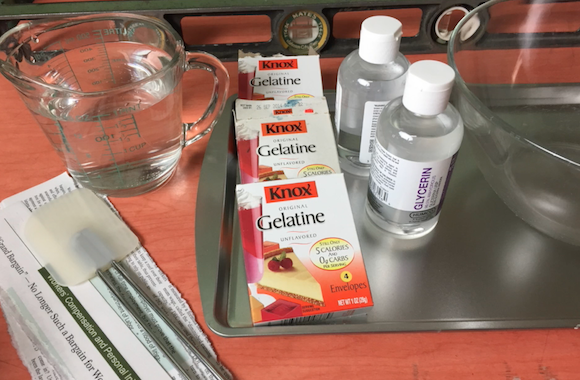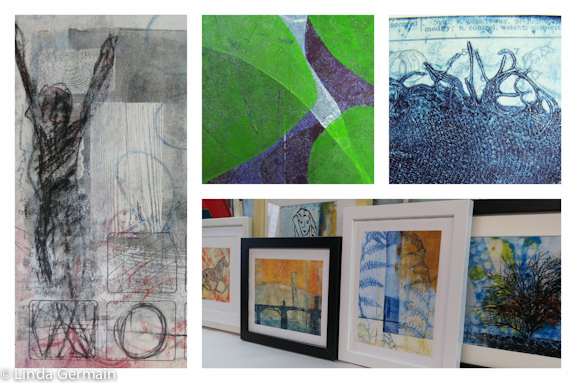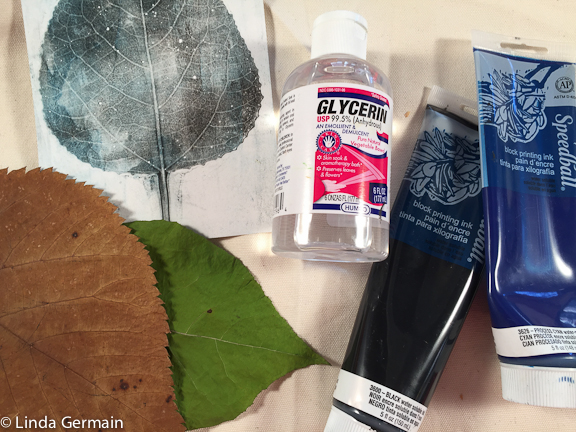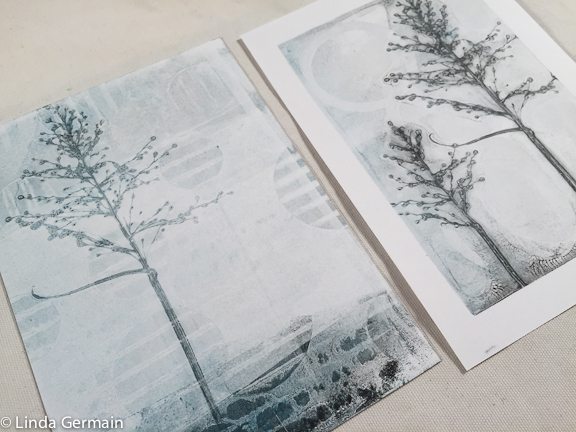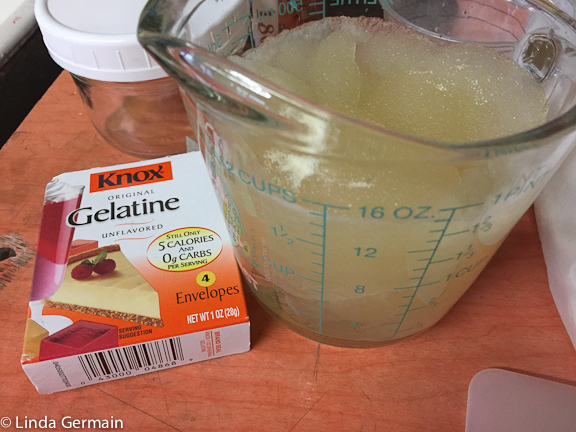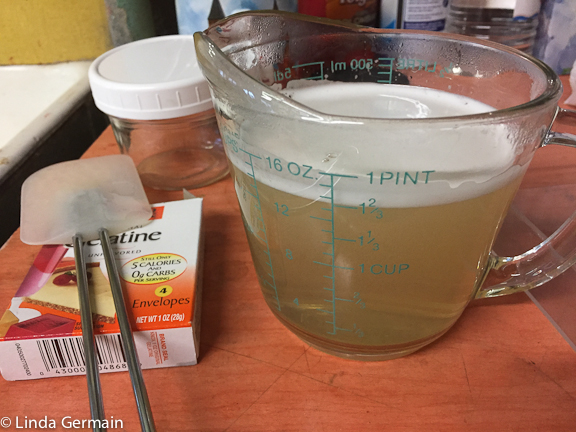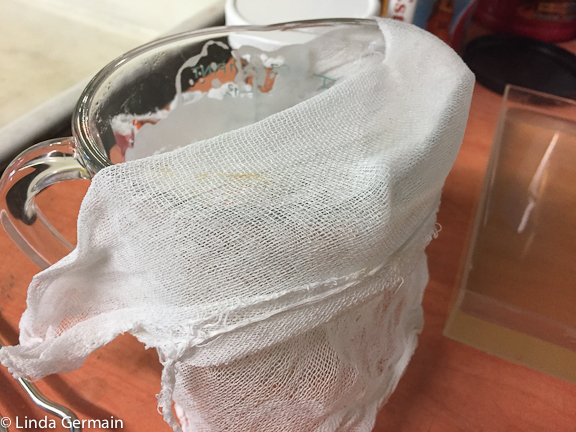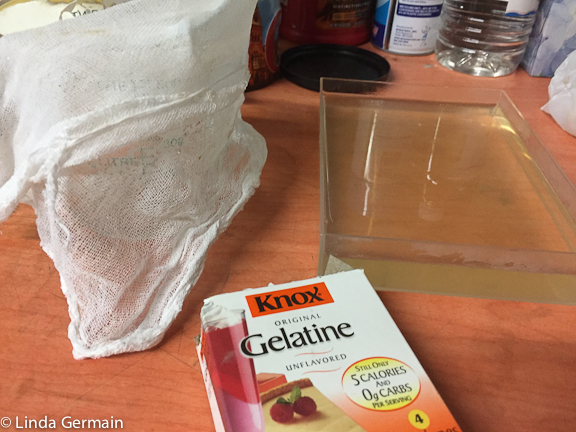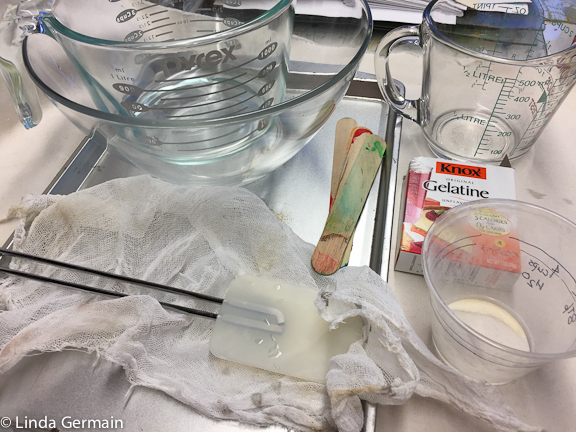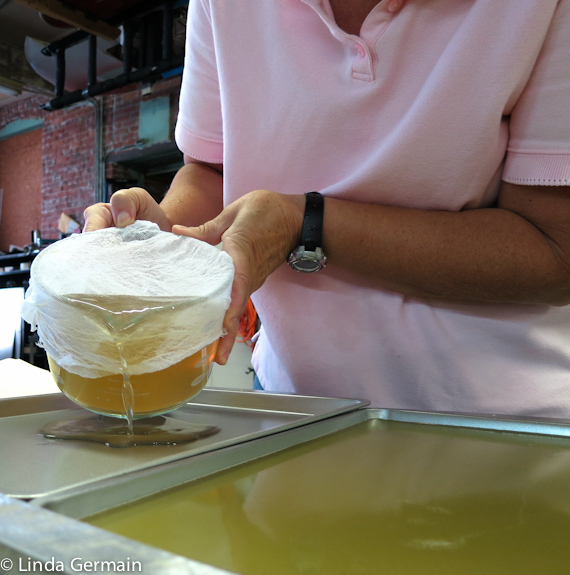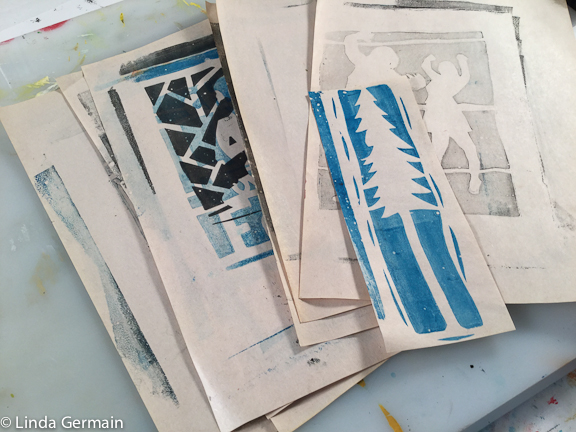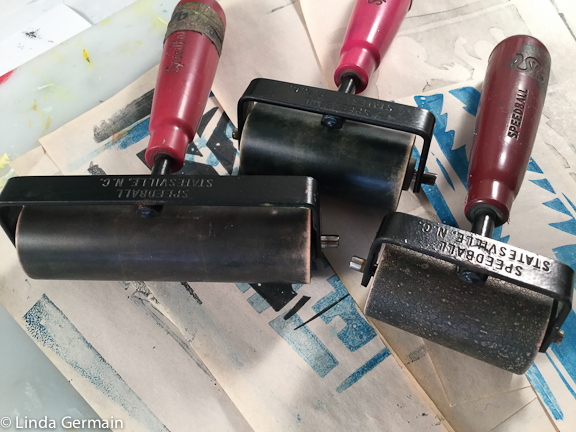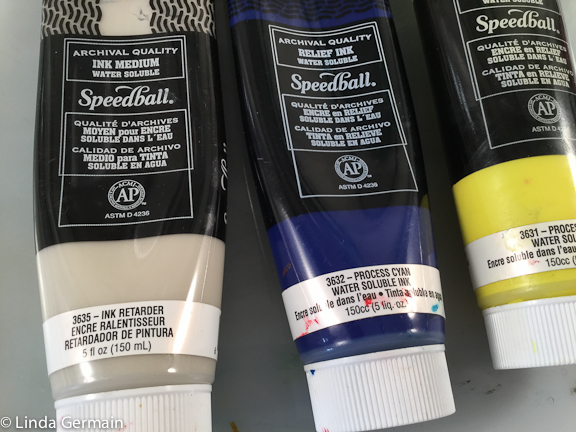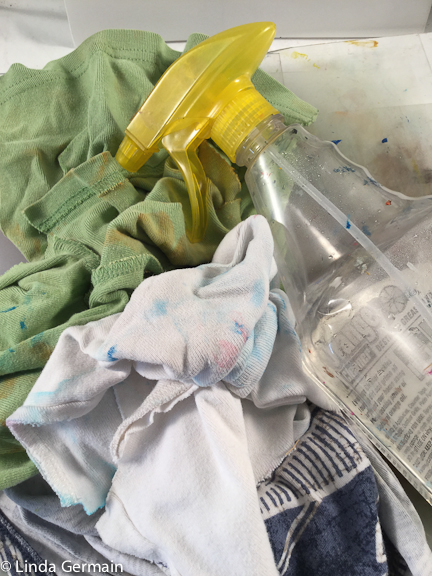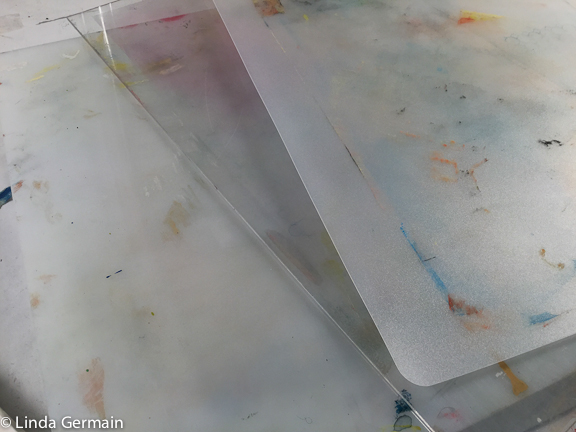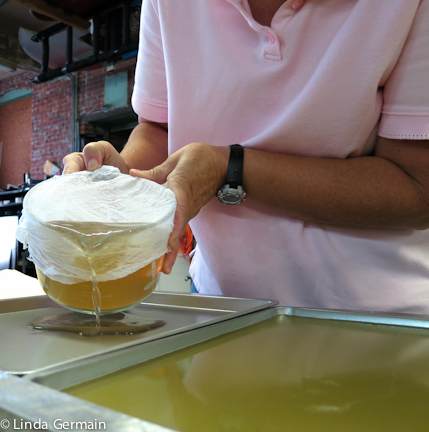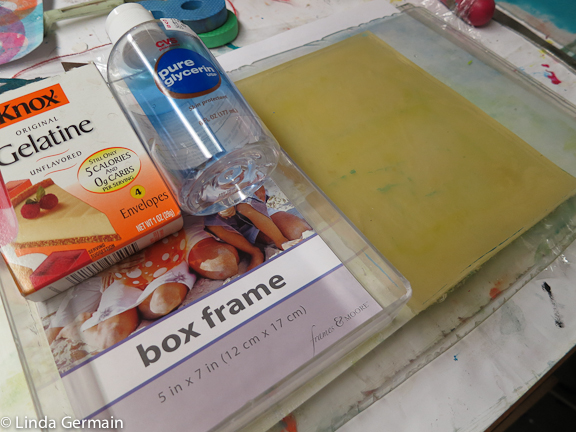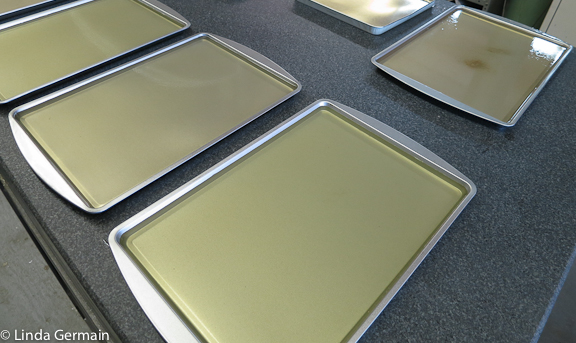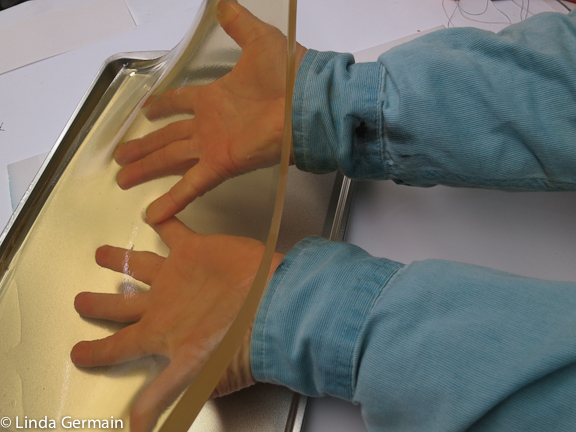3 ways to use Glycerin in gelatin printmaking
I have been using glycerin in my gelatin plate recipe for many years now. It is wonderful. The glycerin makes the gelatin plate strong and long lasting. And eliminates the need to refrigerate the plate.
If you have not tried making your own gelatin and glycerin plate for monotype printmaking, you should. Get the FREE recipe and instructions below.
Additionally, you will receive a weekly email about printmaking, ideas, tips and courses.
Join us today and start having fun!
The second way that I am using glycerin is as a retarder with the speedball water based block printing inks.
I just learned about this option from a very generous student in a recent class. I add a drop or two to the ink on my palette and it keeps the ink alive and workable for a very long time.
The third way that I use glycerin in my gelatin printmaking process is to preserve leaves and ferns. In the image above the brown leaf is several years old and yet it is still flexible and good for printing. Where as the green leaf is only one day old and it is now shriveled and crispy and no longer good for printing.
Glycerin can be hard to find. I often look in the first aid aisle of the pharmacy. Sales clerks sometimes are not familiar with it as well.
I have found glycerin:
- at Walmart
- at CVS, and similar pharamcies
- AC Moore and Michaels in the wedding section
The price can vary quite a bit. Make sure it is 99 to 100 % glycerin and not mixed with water. These days folks are using it to make hand sanitizer, so your best bet maybe to get it online.
Now would be great time to order some glycerin and make a gelatin plate. I am working on a 3 day online gelatin printmaking class that I am really excited about, SIMPLIFY – create powerful gelatin prints. READ the details on the printmaking workshop page.
3 ways to use Glycerin in gelatin printmaking Read More »
